by Ocean Robbins: Growing grains for food might have started something like this:
We are proud to announce a new partnership with John and Ocean Robbins and the Food Revolution to bring our readers Summits, Seminars and Masterclasses on health, nutrition and Earth-Conscious living.
Your Chance to Attend From Food to Freedom Film for FREE!
The Food Revolution Premiere of From Food to Freedom Film
Hunter-gatherer communities living near a river picked the seeds of grasses that grew wild on the river banks. They’d carry them back to the settlement to share with the others. But woven baskets being what they were, some seeds would fall out onto the ground where they would grow new plants. “Hey,” some folks reasoned, “why trek all the way to the river for these delicious and filling morsels of food, when we can put seeds in the ground and grow them right here?”
According to Yuval Noah Harari, author of Sapiens, that’s pretty much the story of the origin of agriculture, specifically the domestication of grains, which for the last few millennia have been the principal source of human calories. These days, our species gets about 50% of all our calories directly from grains such as wheat, corn, and rice — and much more indirectly through livestock that get fed huge quantities of grain.
The Paleo movement blames the domestication of grains and their addition to our diets for much of our current health woes. To be truly healthy, they believe, we must cut way back on all “carbs” and return to our “natural” hunter-gatherer diets of meat and undomesticated plants.
And there’s some truth in there. You might even forgive me for the intentional pun of identifying a “grain” of it. Relying too heavily on grains, to the exclusion of other types of plants (like leafy greens, tubers, vegetables, fruits, legumes, nuts, and seeds) can lead to nutritional imbalances. And some people are sensitive or even allergic to gluten, a protein found in wheat, rye, and barley.
But blaming grains for our modern health woes misses an important point: in the industrialized world, we consume mostly processed grains, not whole ones. And in so doing, we miss out on a bundle of nutrients that are contained in whole grains. Processing — which generally involves fractionating the grains and removing their fiber-filled outer coverings — strips away essential vitamins and minerals. And without fiber, the carbohydrates in grains can cause rapid and intense spikes in blood glucose, leading to inflammation and the development of chronic diseases.
There’s also a lot of research showing that people who consume whole grains are typically healthier than those who don’t. So vilifying grains isn’t the answer to our health crisis. Instead, let’s get to know and appreciate the wide variety of whole grains, beyond the “big three”: wheat, rice, and corn. And we’ll look at how to prepare, store, and cook them, which whole grains are truly gluten-free, and how to use grains in recipes.
Keep reading to discover how to experiment with different grains, so you can add these delicious, filling, and healthy foods to your diet.
What Are Whole Grains?
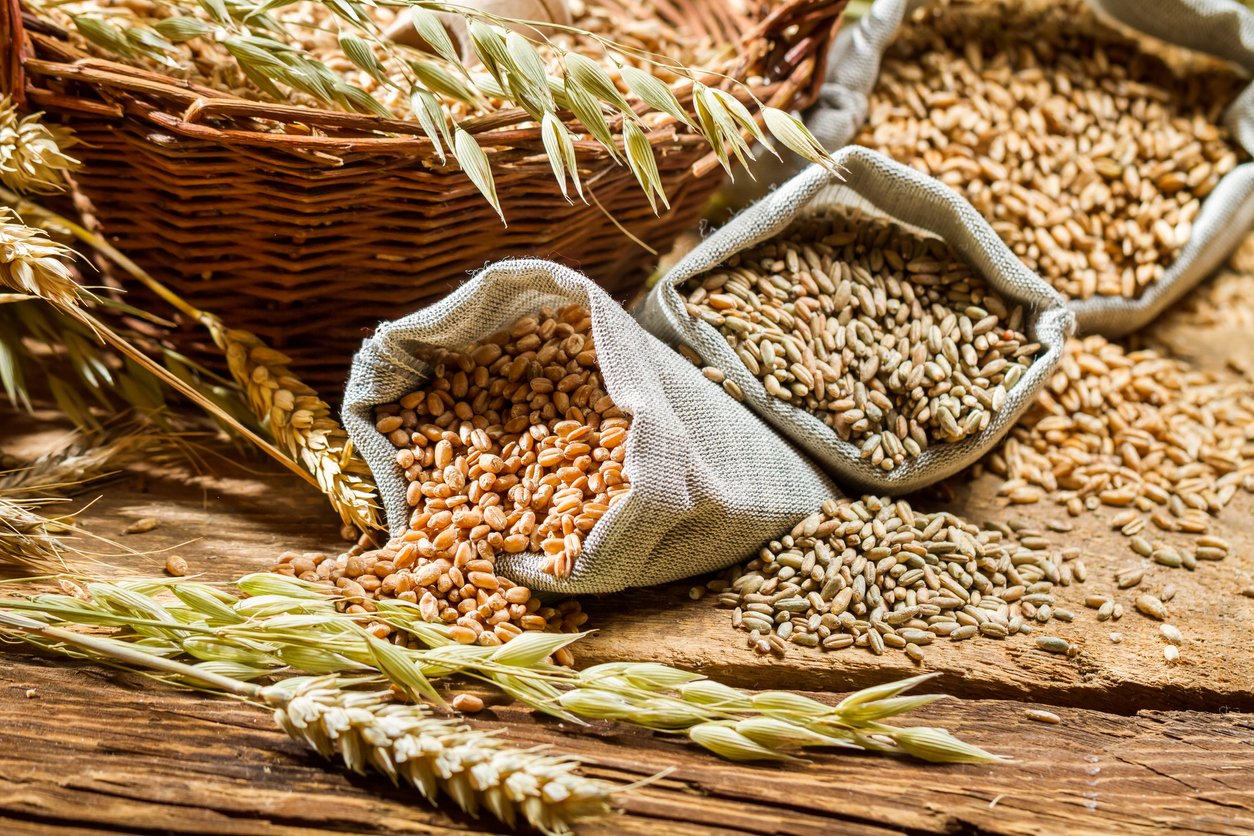
Scientifically speaking, a grain is the harvested seed of a grass. But before I go too far down that rabbit hole and start throwing around words like “monocotyledonous,” let’s agree that we know a grain when we see one and focus instead on the definition of “whole” in this context.
According to the Whole Grain Council, grains are whole “when consumed in a form including the bran, germ, and endosperm.” In other words, most grains and grain products that don’t have any additional ingredients listed and are in their natural, unprocessed state are whole grains.
You can also find whole grains in some processed and packaged foods. Just be aware that a “made with whole grains” claim doesn’t necessarily mean the entire food is made with whole grains. For example, Pepperidge Farm Cheddar Goldfish are “baked with whole grain” but also include enriched white wheat flour in the ingredients list.
To be certain that you aren’t getting white flour, wheat gluten, or other processed grains, in the US (and 64 other countries!) look for the “100% Whole Grain” stamp to guarantee that all the grain is whole and unrefined.
An Essential List of Whole Grains
As I mentioned, there are a lot more whole grains than just wheat, rice, and corn. There are two main categories, biologically speaking: true grains and pseudo-grains. Here’s a reasonably comprehensive listof each, courtesy of the Whole Grains Council:
- True grains
- Rice (including brown rice, red rice, and black rice)*
- Wild rice (not technically rice — it’s one of four species of grass)*
- Farro
- Oats*
- Unhulled Barley (hull-less and lightly pearled barley are not technically whole grains)
- Teff*
- Wheat and wheat berries (including bulgur)
- Corn (avoid labels that say “degerminated” where the germ and bran are removed, and look for the words “whole corn”)*
- Einkorn
- Freekeh
- Kamut
- Rye and rye berries
- Sorghum*
- Spelt
- Triticale
- Pseudo-grains
- Quinoa*
- Amaranth*
- Millet*
- Buckwheat*
- Kañiwa*
- Fonio*
*Grains marked with an asterisk are naturally gluten-free. Some grains may also have cross-contamination from gluten-containing grains, so if you have celiac disease or need to avoid gluten make sure you buy certified gluten-free if you’re not sure. Some whole grain products that are naturally gluten-free may also be mixed with a gluten-containing grain. Make sure to read the ingredient label carefully if gluten is a concern.
When possible, purchase organic whole grains to avoid glyphosate and other pesticide contamination.
When to Soak or Rinse Grains

OK, now that we’re all acquainted, let’s talk about the best ways to get more whole grains into your life. While you can just cook whole grains straight away, there are some good reasons to presoak them before cooking.
Soaking grains for a few hours, or even overnight, can enhance their nutritional benefits, render them easier to digest, and even remove compounds like arsenic, saponins, or phytates. The latter two can block the absorption of some nutrients, and arsenic is downright toxic.
The so-called antinutrients like saponins (found in oats, quinoa, and amaranth) and phytates may actually be beneficial to your health in moderation, but there’s no amount of arsenic that you should try to consume. And since much of the world’s rice, one of our most consumed grains, includes an excess of arsenic, soaking and rinsing rice is a helpful step to protect yourself and your loved ones.
Reducing Arsenic in Rice
At the very least, rinse brown rice thoroughly before cooking, making sure the water runs off clear by the final rinse. Even better, soak it for 48 hours before cooking it, pouring off the water and rinsing it every 8–12 hours. Then for maximum brownie points, cook the rice in 6–10 parts water to one part rice, and drain off the extra water after cooking.
Alternatively, you can reduce the arsenic concentrations in rice while maintaining levels of beneficial nutrients by using the “parboiling with absorption” method.
Bring water to a boil, using four cups of fresh water for every cup of raw rice. Add the rice and boil for five minutes. Discard the water, rinse the rice, and add two cups of water for each cup of rice. Then cover the pot and cook on low to medium heat until the water is absorbed and the rice is the desired texture.
How to Get Rid of Saponins
Saponins can affect the taste of quinoa, in particular, so if you want folks to love this healthy pseudo-grain, you’ll want to soak it for at least five minutes before rinsing and cooking. If you want the quinoa to start germinating, for increased nutrition and absorption of those nutrients, soak it overnight, and then pour off the water before you cook it in fresh water.
Rinsing Teff
Teff, a grain popular in Ethiopian cuisine (it’s used to make that stretchy and tangy injera flatbread used as plate, napkin, and finger food), also needs a good rinse. Because the seeds are so small, a lot of packaged teff includes weed seeds, bits of stalk, and some dirt mixed in. But, and I share this from personal experience, make sure to use a strainer with small holes, because otherwise, you’ll pour your teff right down the drain!
Reducing Phytates in Grains
If you’re sensitive to phytic acid, soak high-phytic-acid grains like buckwheat, amaranth, and barley in water that contains a small amount of acidic liquid (like vinegar or lemon juice) to activate the enzyme phytase (which breaks down phytic acid). A couple of tablespoons of acidic liquid added to the soaking water should do the trick.
What to Cook Grains In
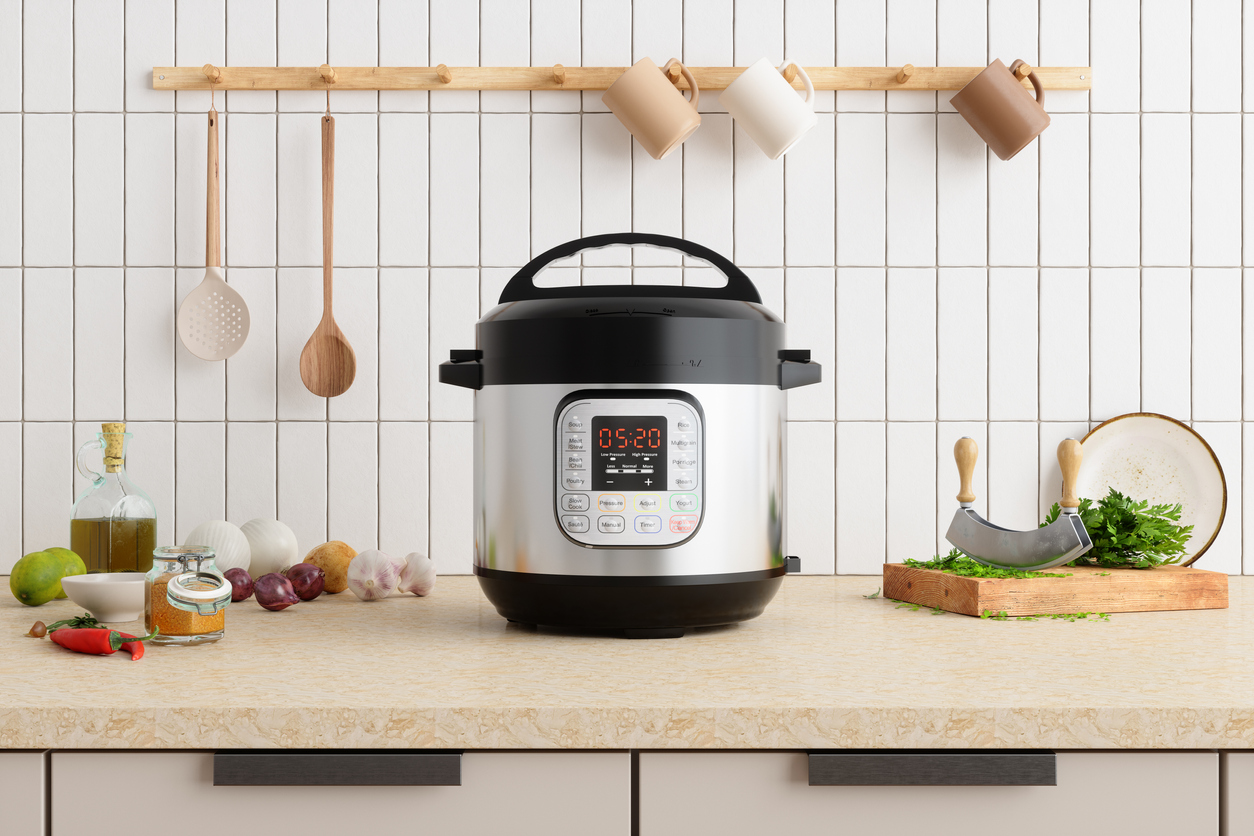
Use a pot suitable for the task that’s an appropriate size for the amount of grains you need. You can use a saucepan for smaller servings, or a large stock pot for batch cooking.
Because there’s a lot of water involved, the risk of burning and uneven heating is low, so you don’t need the world’s fanciest thick-bottom or enamel cast iron pot. Do avoid cookware that is coated in Teflon, aluminum, or copper, though, as these can off-gas or leach chemicals into the water. Stainless steel is a solid choice. At Food Revolution Network, we also love the 100% ceramic Xtrema Versa Pot, which comes in sizes ranging from 1.5 to 5.5 quarts, as well as the smaller Xtrema Traditions Saucepan, which starts at 1 quart and goes up to 3.5 quarts. (Note, however, that ceramic pots don’t work on induction stoves.)
You can speed up the cooking process with pressure, using an electric pressure cooker like the Instant Pot, or a stovetop model. Many brands of rice cookers even have sensors that can determine exactly how long and how hot to cook different kinds and quantities of grain, and can keep them warm until you’re ready to eat. Just be aware that most of these, unfortunately, come with Teflon-based nonstick inserts. However, GreenLife’s Rice and Grains Cooker utilizes a healthier ceramic nonstick coating, and the Instant Pot uses stainless steel.
Grain Cooking Times and Water Needs
It’s the water that makes grains chewy and “fluffed up” when cooked. All grains are slightly different, but a general rule, if you’re using the traditional absorption cooking method, is you need at least twice as much water as grain, a ratio that can sometimes decrease at higher quantities. Many traditional cooks follow a “thumb knuckle” rule (or “rule of thumb knuckle,” I guess you could say), where they add enough water to the height of one thumb knuckle above the grain.
In terms of how long to cook whole grains, some grains cook much quicker than others. It can depend on the type and variety of grain, its size, and whether it was soaked or pre-cooked (and for how long). The quickest-cooking grains include quinoa, rolled oats, millet, bulgur, buckwheat, teff, and amaranth.The longest cooking whole grains, requiring over 30 minutes (fewer in a pressure cooker), are brown rice, wild rice, oat groats, and most wheat varieties.
For step-by-step instructions on how to cook rice, quinoa, and Kamut, check out our article and video on How to Cook Whole Grains, featuring FRN’s Dietitian & Recipe Developer, Nichole Dandrea-Russert, RDN.
You can also download our full guide to whole grain cooking times, soak times, water amounts, and cooking methods, here: Whole Grains Cooking Guide.
The Benefits of Batch Cooking Grains
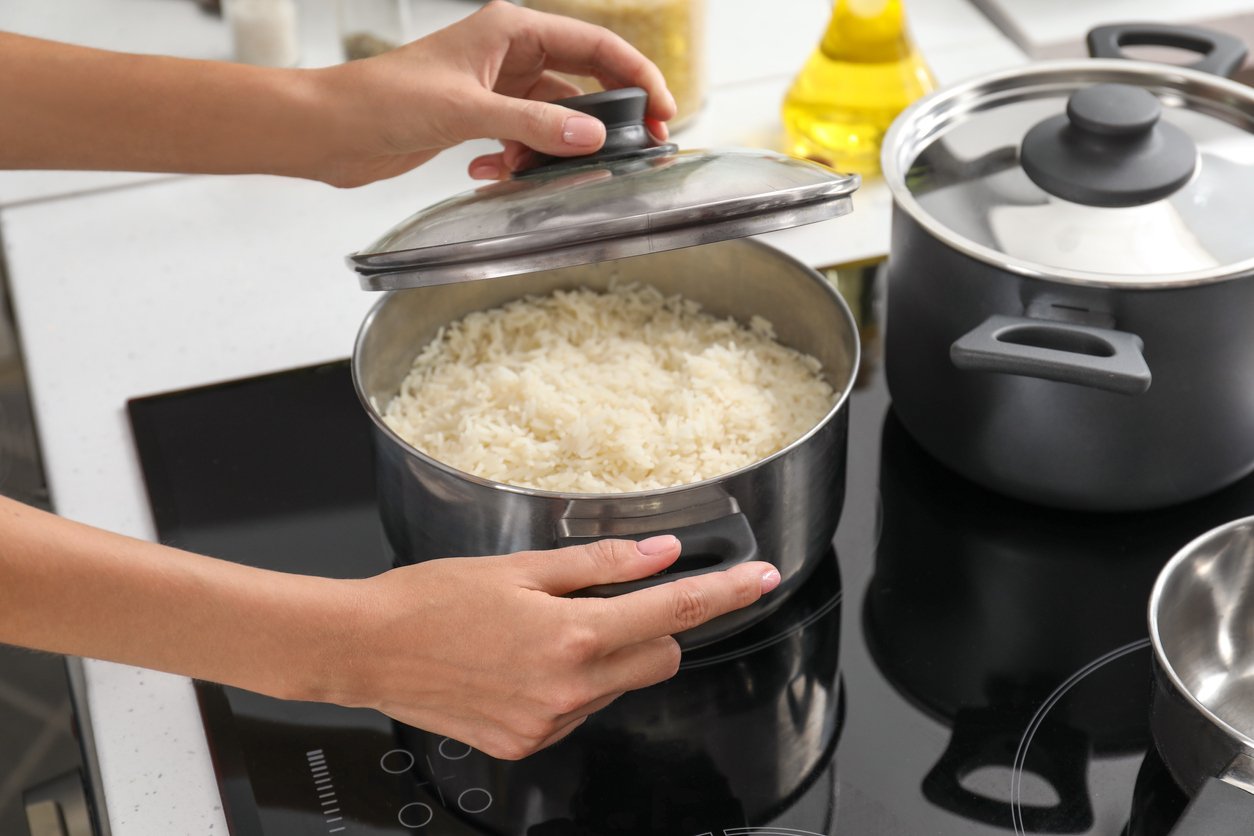
While you can cook up a small serving of whole grains right before serving, there are some compelling reasons to get into the habit of batch cooking, especially if you live one of those hectic modern lives that includes other responsibilities like work, errands, child care, elder care, or community service.
Batch cooking can help you spend less time in the kitchen overall, since cooking a large pot of grains doesn’t really take much more time than cooking a small one. Having precooked grains at your disposal, ready to heat and eat, makes it much easier to throw something together on the fly.
Batch cooking can also be a money saver. Since grains tend to be affordable and filling sources of nutritional excellence, making them a staple of your diet can lower your overall food bill. And increasing the amount you cook may allow you to sensibly buy grains in bulk, saving even more money in the long run.
When to Batch Cook
The trick to batch cooking is to proactively set aside time in your week. You can pick a day and time when you know you’ll be free, or have to attend a Zoom call but can be muted and off-camera (unless you’re rocking a really cool apron and want all your colleagues to see it).
For most people, weekends are batch cooking prime time. Lots of folks enjoy blocking out a couple of hours on a Sunday to crank up their favorite tunes and plan and batch cook the week’s healthy meals. Most people find that once a week is the ideal cadence for meal prep, setting them up for an easy and delicious week of meals.
Oh, and that Whole Grains Cooking Guide that I mentioned above (and sneakily just linked to again; go get it! — I’ll wait) includes instructions for different types of equipment, some of which, like the Instant Pot and other “set it and forget it” appliances like rice cookers, are ideal for batch cooking. While they do their thing, you can chop and mix and do all the other types of meal prep.
How to Store Grains
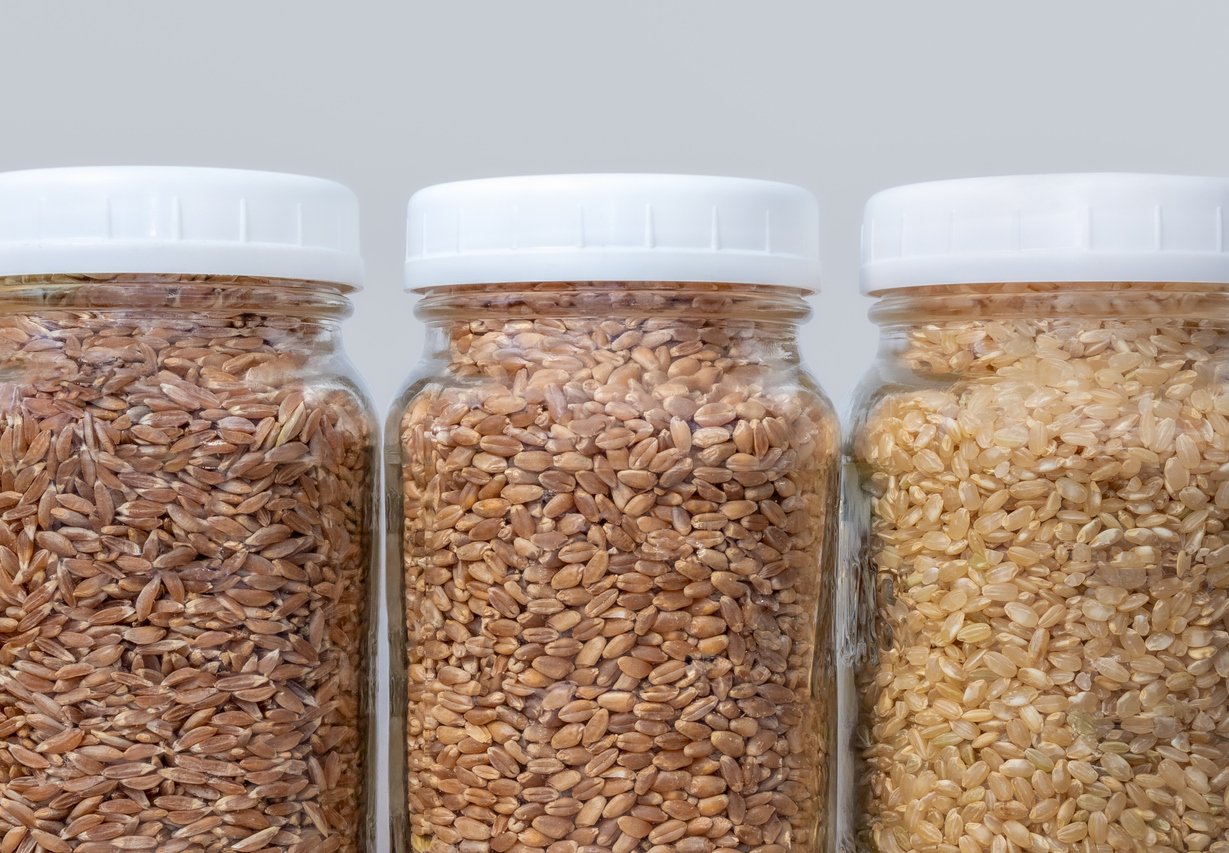
Unlike flours made from grains, whole grains tend to last a long time without going rancid or stale, thanks to the phytonutrients that protect and preserve the oils and germ. As long as they’re sealed (to keep out bugs) and dry (to prevent fungal or bacterial growth), you can keep dried grains for months. If you don’t plan to use them within a few months, you can store whole grains in an airtight container in the freezer.
Once you cook whole grains, they’re considered perishable. Cool them to room temperature and then store them in the refrigerator at no more than 40°F (5°C) within 2 hours of preparation. Cooked whole grains last approximately 3–4 days in the fridge.
If you’re batch cooking once a week, of course, 3–4 days won’t get you from Sunday to Sunday. One solution to that conundrum is to freeze some of the cooked grains and defrost them as necessary (making sure to let them fully cool before freezing). Cooked grains stay fresh in the freezer for about 2 months — so make sure you label them with contents and the date you put them in, so you don’t end up having to toss containers of mystery glop down the road.
If you store cooked grains in airtight containers made of glass, stainless steel, or silicone rather than plastic, you avoid leaching plastic chemicals into hot and moist food. If plastic is your only alternative, be sure to cool the cooked grains down to room temperature before placing them in the plastic container.
Whole Grain Recipes
With so many ways to prepare whole grains, we’ve got just about every craveable flavor and texture imaginable to keep them (and the many ways to prepare them) exciting and fresh! You can enjoy wholesome whole grains for breakfast, lunch, and dinner with these tantalizing recipes, which will rekindle the joy of cooking whole grains — or, at the very least, put all those batch-cooked grains to good use!
1. Cinnamon Roll Baked Oatmeal
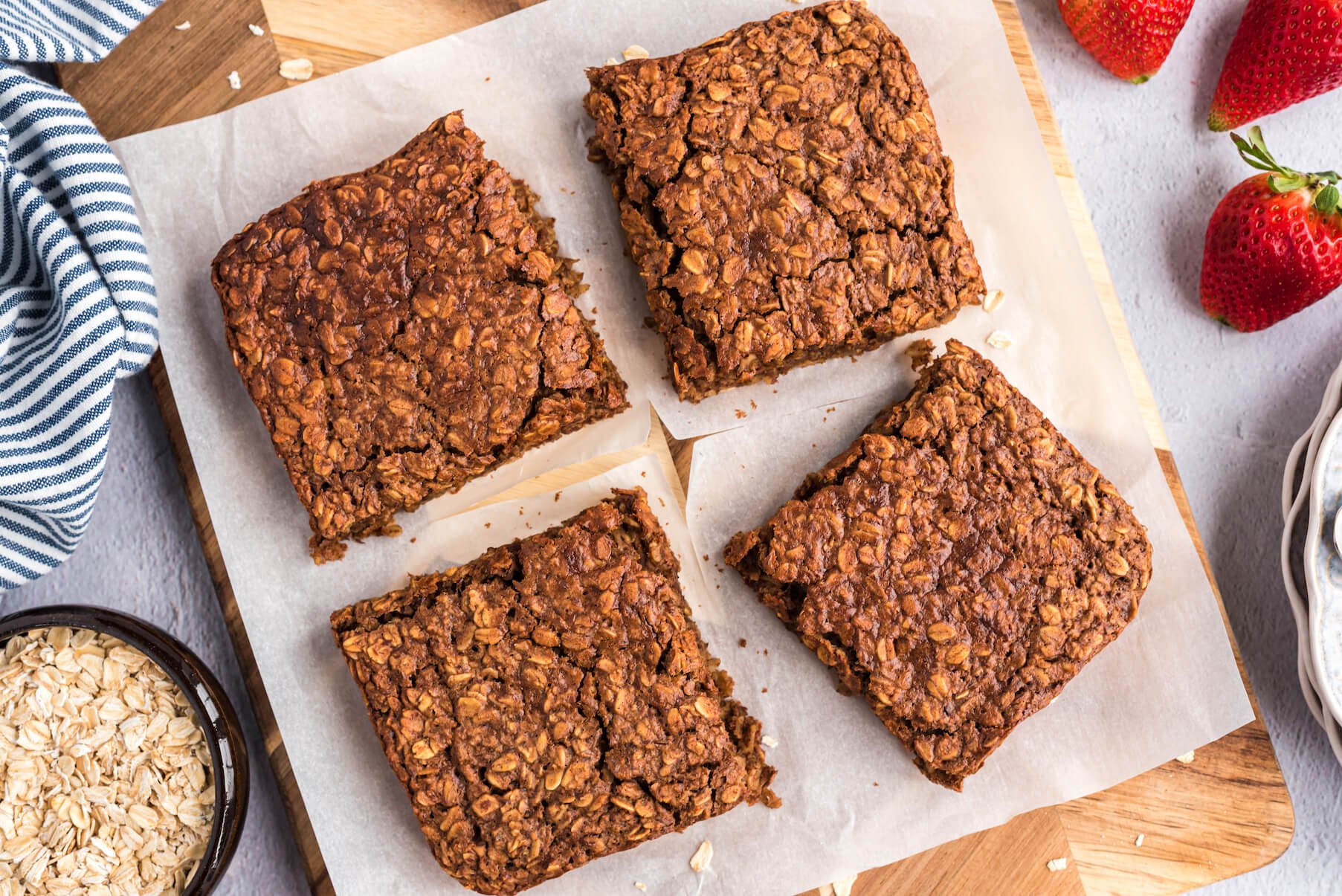
Oats might be one of the best examples of versatility, nourishment, and ease of preparation when it comes to our whole grain friends. Not only are there a whopping eight grams of fiber per one-cup serving, but they also have plenty of phytonutrients and are equally delicious sweet or savory. Although Cinnamon Roll Baked Oatmeal isn’t a dead ringer for a sticky cinnamon roll, the flavors in this scrumptious cinnamon oatmeal bake fit the bill if you’re craving something warming, sweet, and slightly gooey!
2. Buckwheat Sweet Potato Chili
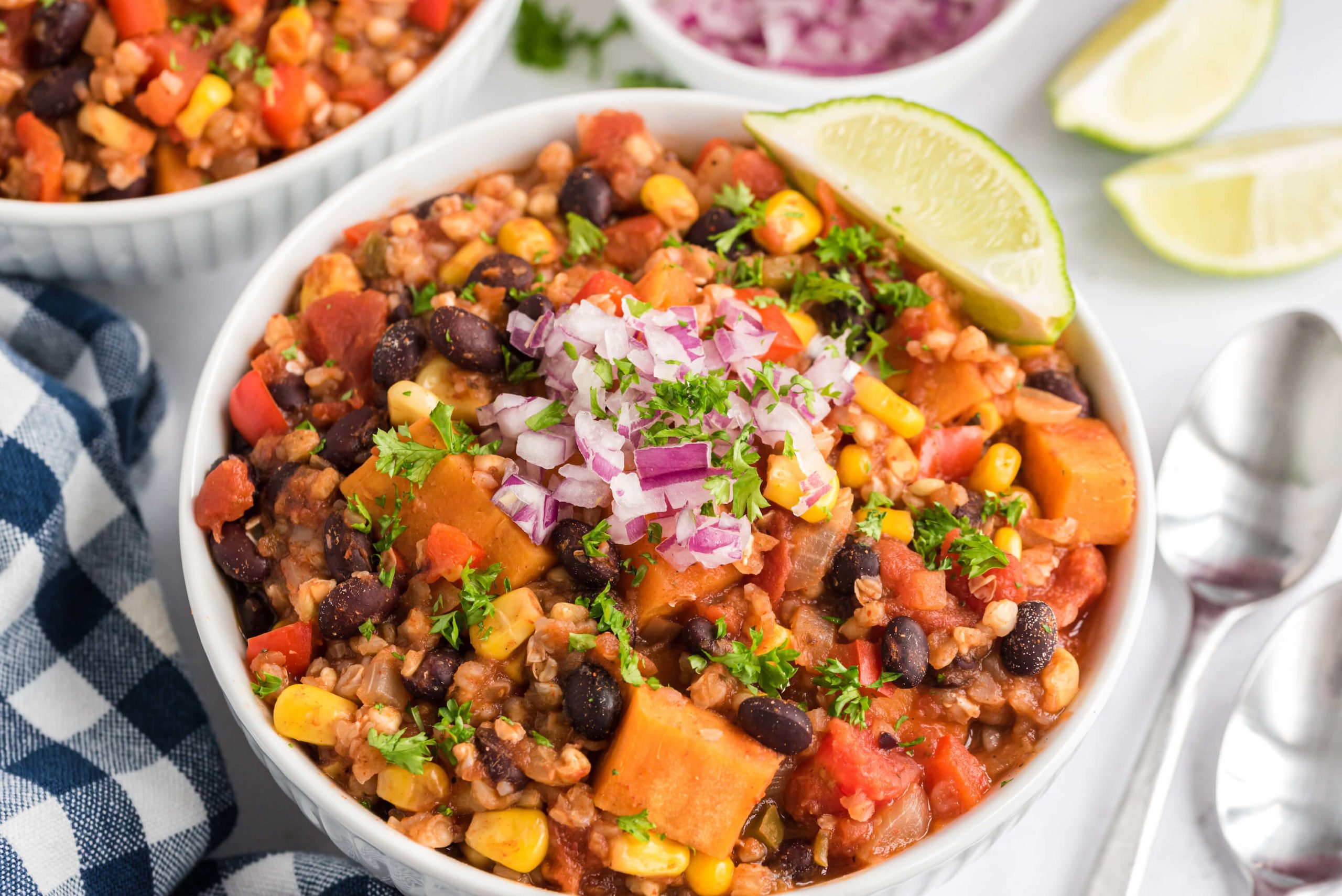
We aren’t quite sure which is the bigger superstar in this dish, buckwheat or sweet potato. Either way, our Buckwheat Sweet Potato Chili is a comforting bowl of deliciousness that is packed with so much nutrition (and protein thanks to both the buckwheat and black beans), you’ll be thinking up new ways to enjoy this delightful pairing again and again.
3. Super Greens Salad with Bulgur and Lentils
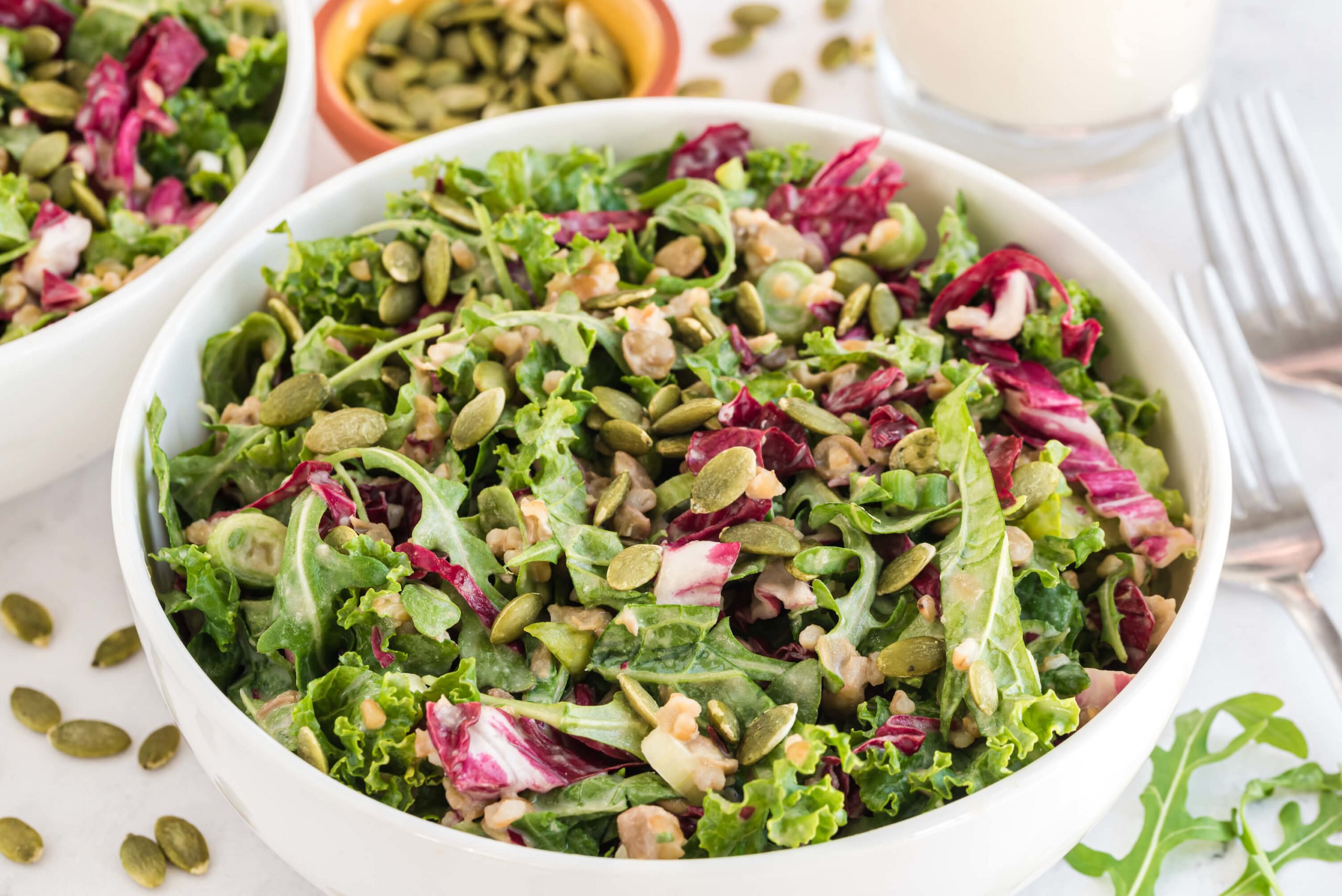
If you love a good hearty salad and want a recipe that doesn’t require too much fuss but is still fulfilling and satisfying, then this Super Greens Salad with Bulgur and Lentils is for you! Chock-full of nutrient-dense greens, protein-packed lentils, and fiber-filled bulgur wheat, this salad gets nice and cozy with a Creamy Ginger Dressing that is absolutely delish!
4. One-Pot Mexicali Quinoa
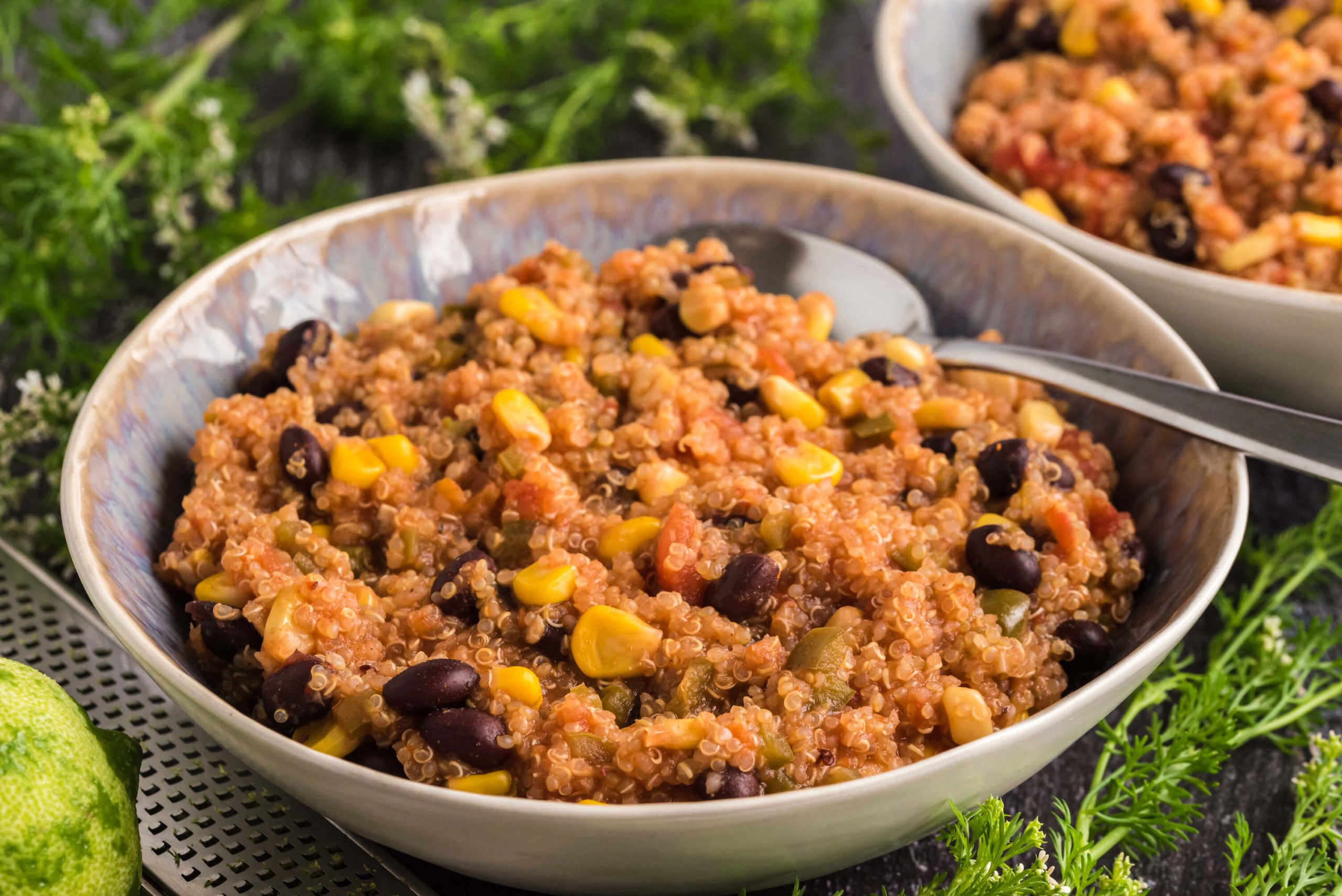
As you learned in this article, quinoa is technically more of a seed than a grain, but that doesn’t stop it from having a delightfully fluffy texture that is full of fiber and protein, to go along with its nutty flavor! One-Pot Mexicali Quinoa is a fiesta of colors, nutrition, and flavors just waiting to be loved. Honestly, we couldn’t think of a better way to showcase the versatility of this humble pseudo-grain!
5. Berbere-Spiced Sorghum Burgers
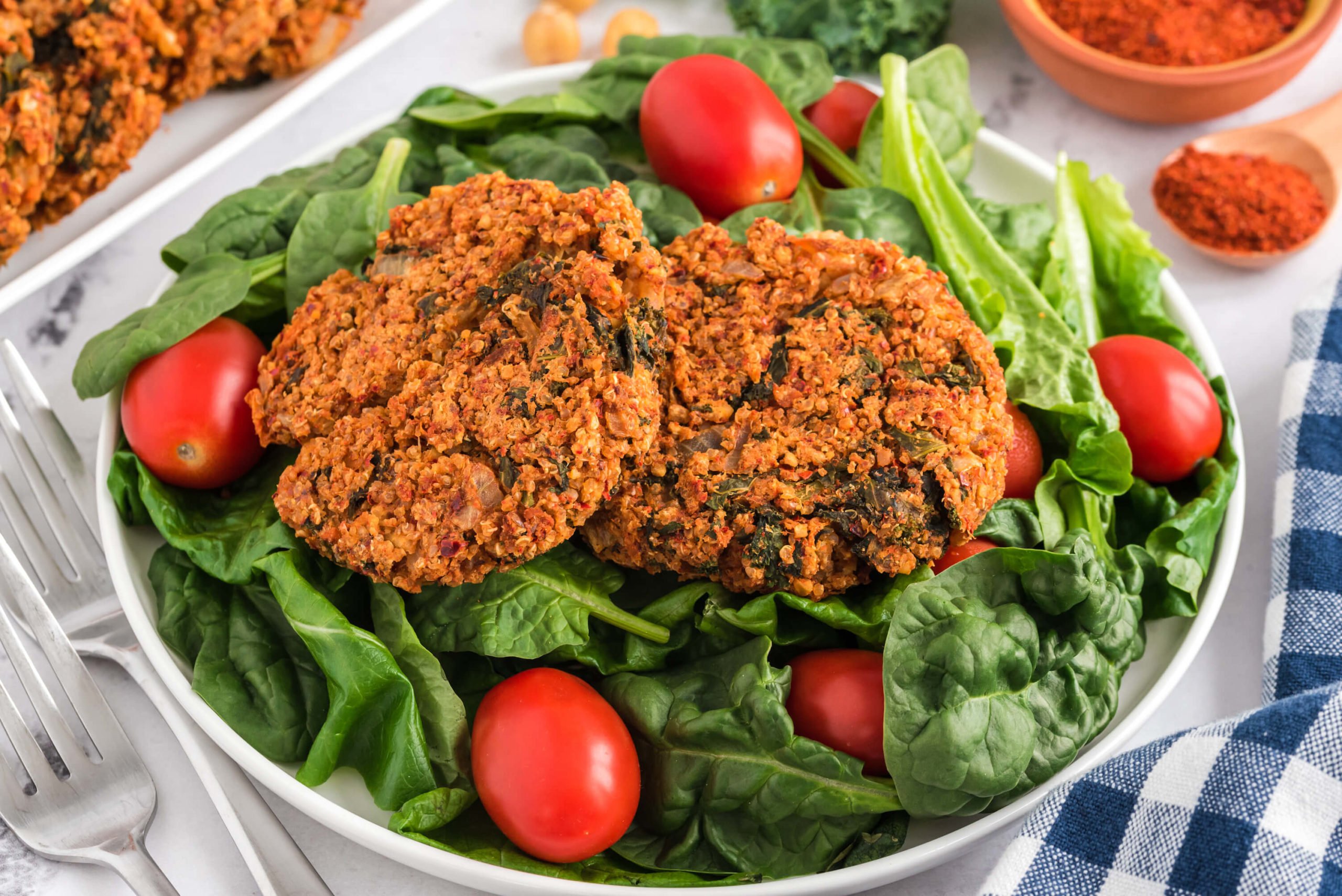
Sorghum is an underrated whole grain that is rich in fiber and phytonutrients. With its slightly nutty flavor and hearty, chewy texture, sorghum is a delightful grain that is seriously satisfying in these Berbere-Spiced Sorghum Burgers. Combined with protein-rich chickpeas, aromatic veggies, earthy kale, and FRN’s Berbere Spice Mix, you’ve got a tantalizing veggie burger that showcases the versatility of this delightful whole grain!
Embrace Whole Grains!
Grains can be a filling, economical, delicious, versatile, and healthy part of a plant-based diet. They’re best consumed in their whole state, along with other whole foods like legumes and vegetables, rather than in processed foods. There are many types of whole grains with their own cooking and soaking protocols. So take your pick depending on personal preference and convenience.
We are proud to announce a new partnership with John and Ocean Robbins and the Food Revolution to bring our readers Summits, Seminars and Masterclasses on health, nutrition and Earth-Conscious living.
Your Chance to Attend From Food to Freedom Film for FREE!










































